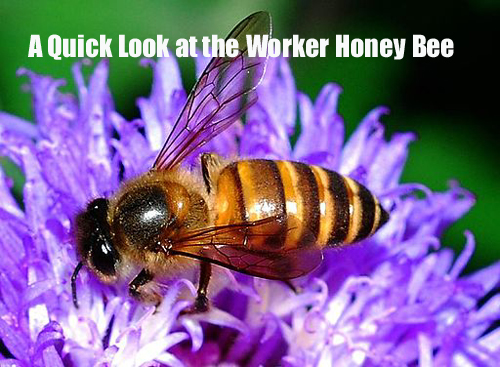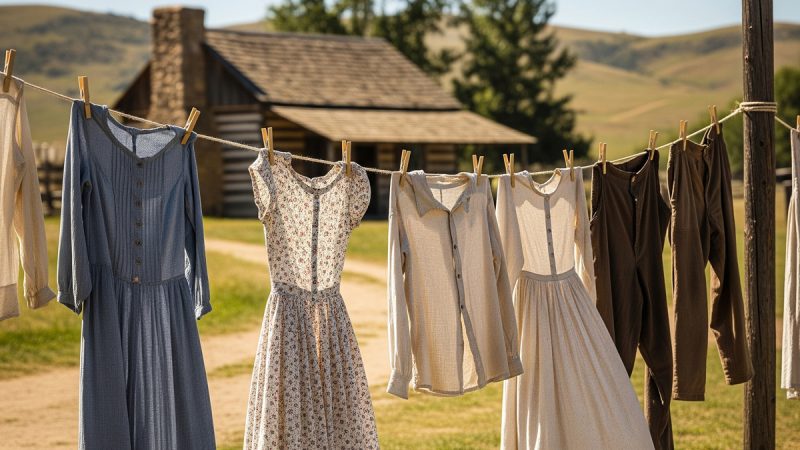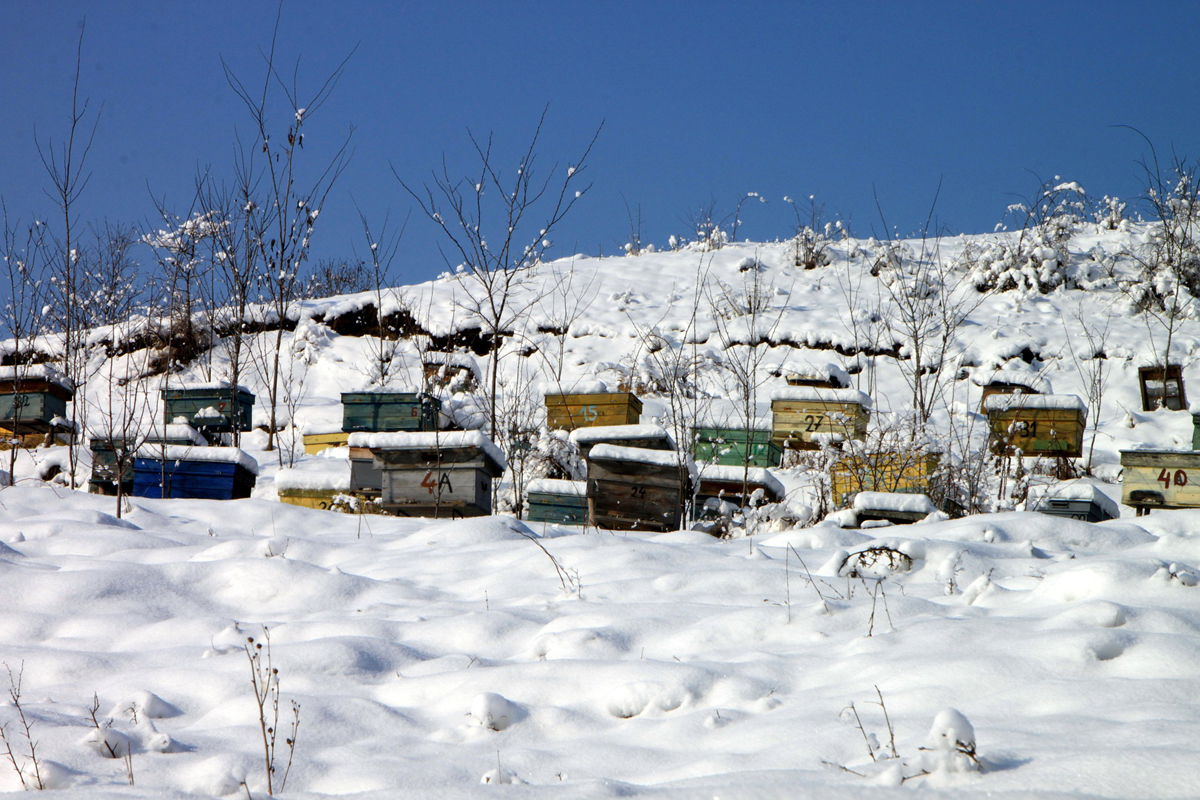A Quick Look at The Worker Honey Bee

Worker honey bees are the smallest members of the hive, size wise, but constitute the majority of bees occupying the colony. They are all female and under normal hive conditions do not lay eggs. Workers have specialized body structures, such as brood food glands, scent glands, wax glands and pollen baskets, which allow them to perform all the necessary hive tasks. They clean and polish the cells, feed the brood, care for the queen, remove debris, handle incoming nectar, build beeswax combs, guard the entrance and air-condition and ventilate the hive during their initial few weeks as adults. At 3 weeks old they then become field bees, foraging for nectar, pollen, water and propolis (plant sap) until they die.
The total life span of a worker bee during summer is about 6 weeks. However workers reared in Autumn may live as long as 6 months, allowing the colony to survive the winter and assisting in the rearing of a new generations in the spring, before they die.
Laying Workers
When a colony becomes queenless, the ovaries of several workers develop and workers begin to lay unfertilized eggs. Normally, development of the workers’ ovaries is inhibited by the presence of brood and the queen and her pheromones. The presence of laying workers in a colony usually means the colony has been queenless for several weeks. However, laying workers may also be found in normal ‘queenright’ (queen present) colonies during the swarming season and when the colony is headed by a poor queen. Colonies with laying workers are recognized easily as there may be anywhere from five to fifteen eggs per cell and small-bodied drones are reared in worker-sized cells. In addition, laying workers scatter their eggs more randomly over the brood combs, eggs will often be found on the sides of the cell instead of at the base, where they are correctly placed by a queen. Some of these eggs do not hatch and many of the drone larvae that do hatch do not survive to maturity in the smaller cells.
The laying of eggs by worker bees is the last action of a dying colony, where no queen is present and no young larvae or fertilized eggs are available to raise a new queen. The only thing left for the colony is to try to pass on some of its genes through drones.
Although it seems that the queen is in control of the colony it is actually the workers who collectively control the day-to-day tasks and functioning of the colony and ultimately decide on the fate of the queen.
The Author:
Ben Gibson is a professional beekeeper, writer and naturalist.
Photo. William Cho








